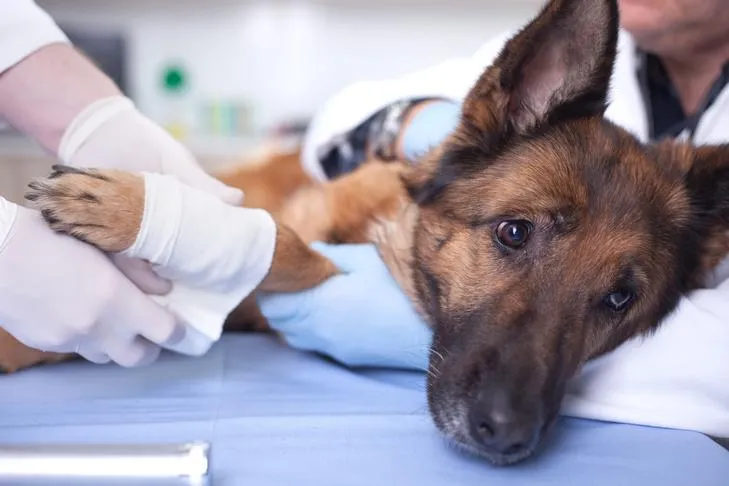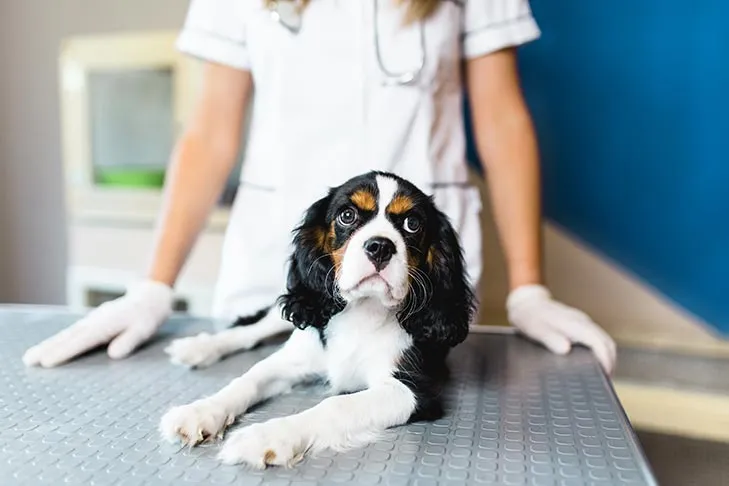Just like humans, dogs can suffer from minor cuts, scrapes, abrasions, or even burns during play or daily activities. As a dog owner, your instinct might be to grab Neosporin, the popular antibiotic ointment, to treat these wounds and prevent infection. But is Neosporin safe for dogs? The answer depends on the situation. While it can help heal superficial injuries in some cases, there are important risks and precautions to consider before applying Neosporin on dogs.
Understanding how to properly care for your dog’s wounds is crucial for their health. Minor injuries are common, but using human products like Neosporin requires caution due to potential side effects. Always prioritize cleaning the area first and consult your vet for anything beyond a simple scrape. In this guide, we’ll explore the pros, cons, and best practices for using Neosporin on dogs, backed by veterinary expertise.
What to Know Before Using Neosporin on Your Dog
Before reaching for Neosporin, assess the wound. For scrapes or scratches, start by cleaning the area thoroughly with mild soap and lukewarm water. Flush out debris, rinse well, and pat dry with a clean cloth. Puncture wounds, bites, or deep cuts demand immediate veterinary attention—don’t apply ointment at home.
Neosporin contains three key antibiotics: bacitracin, neomycin, and polymyxin B. These work together to combat bacteria on the skin and reduce infection risk. However, as Dr. Rachel Barrack, a licensed veterinarian specializing in acupuncture and Chinese herbology at Animal Acupuncture in New York City, explains, “Neosporin has been formulated for people and isn’t necessarily safe for use on dogs.”
 German Shepherd dog getting its foot wrapped by the vet
German Shepherd dog getting its foot wrapped by the vet
Bacitracin and polymyxin B are generally safe for topical use on animals. Neomycin, however, poses risks, including potential hearing loss, especially with systemic exposure. Though primarily linked to intravenous use, Dr. Barrack advises against topical application without vet approval: “It is recommended that you do not administer neomycin topically to your dog without first consulting your vet.”
Allergic reactions are another concern since Neosporin is applied directly to the skin. Perform a patch test: Apply a small amount to a less sensitive area, like the inner thigh, and monitor for 24 hours for signs of redness, rash, hives, or swelling. Dr. Danel Grimmett, a veterinarian at Sunset Veterinary Clinic in Oklahoma, notes, “Typically, small amounts of Neosporin are not harmful.” This test ensures your dog tolerates it before a real need arises.
The benefits are clear: Neosporin eliminates existing bacteria, prevents growth, and forms a protective barrier over the wound, promoting faster healing for minor issues.
For conditions like hot spot on dog’s face treatment, where moist dermatitis leads to raw, infected skin, similar principles apply—clean first and consider vet-recommended options.
Precautions When Using Neosporin on Dogs
Dogs are notorious lickers, and if the wound is accessible—say, on a paw, leg, or belly—they’ll likely remove the ointment quickly. Ingestion isn’t ideal. Dr. Grimmett warns, “The main concern regarding ingestion of Neosporin is the potential impact to the GI flora, resulting in GI upset, such as vomiting and diarrhea.” The ointment’s lubricant base can also cause loose stools.
 Cavalier King Charles Spaniel lying on an exam table at the vet
Cavalier King Charles Spaniel lying on an exam table at the vet
To mitigate this, cover with a sterile, non-stick dressing. However, not all dogs tolerate bandages; they may chew them off, risking constriction and reduced blood flow. Dr. Grimmett adds, “A bandage can act as a tourniquet… Great care must be taken to prevent any constriction.”
Skip Neosporin entirely for heavy bleeding, deep wounds, or signs of infection like pus, swelling, or fever. Rush to the vet or emergency clinic—these could indicate deeper issues requiring professional stitching, drainage, or antibiotics.
Opt for dog-specific alternatives like Vetericyn or Musher’s Secret, formulated without harmful ingredients and safe if licked. These provide similar antibacterial protection without neomycin risks.
When to See a Vet and Safer Alternatives
No matter the injury, consult your veterinarian before using any new product. As Dr. Barrack emphasizes, “Your veterinarian is better equipped to treat your dog’s potential infections than you are at home.” Early intervention prevents complications like abscesses or systemic infections.
In my experience caring for multiple dogs over years, sticking to vet-approved wound care has always yielded the best results. For instance, a simple paw scrape on my German Shepherd healed perfectly with saline rinses and a pet-safe spray—no Neosporin needed.
Final Thoughts on Neosporin for Dog Wounds
Using Neosporin on dogs can be okay for minor, superficial wounds if you’ve done a patch test and can prevent licking. However, due to neomycin risks, ingestion concerns, and better alternatives, it’s often not the first choice. Prioritize cleaning, monitoring, and professional advice to keep your furry friend safe and healing quickly.
Always err on the side of caution—your vet knows your dog’s history best. For more tips on dog wound care, check out our other guides on pet health and recovery.
References
- Dr. Rachel Barrack, Animal Acupuncture: animalacupuncture.com
- Dr. Danel Grimmett, Sunset Veterinary Clinic: sunsetvetclinic.com
- American Kennel Club (AKC) Pet Health Resources
